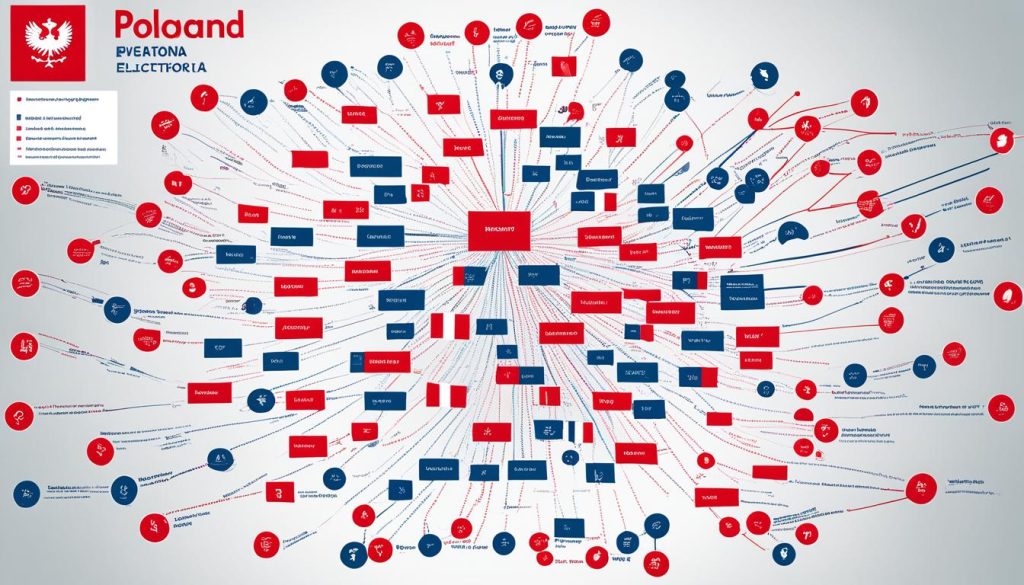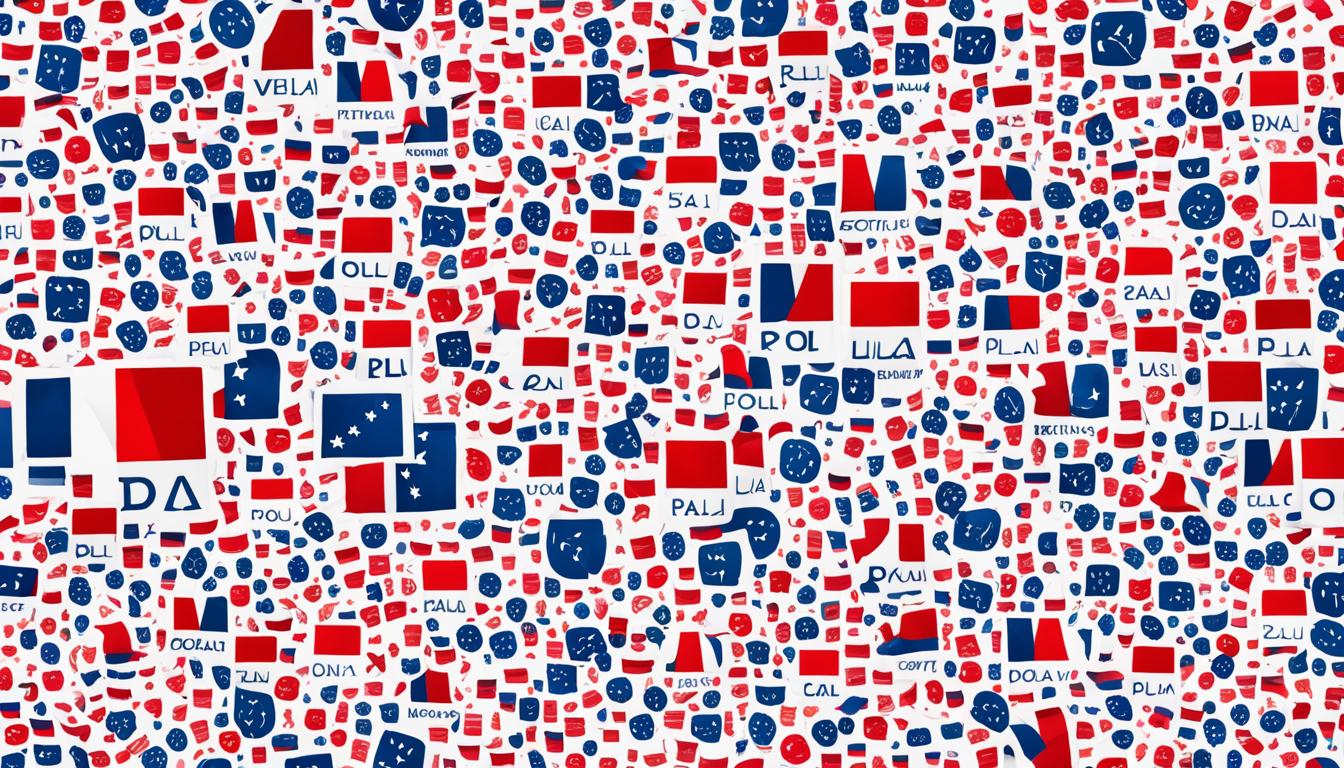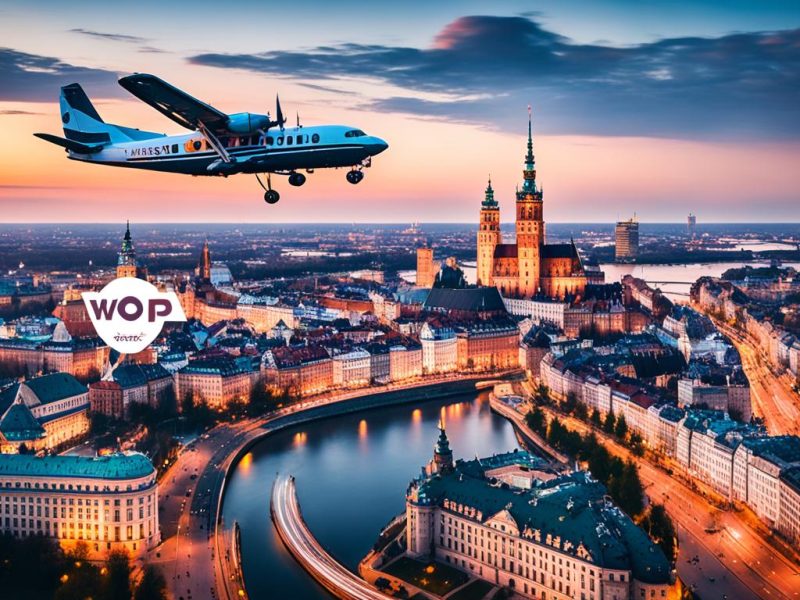The Polish election process is usually complicated, and the latest one was no different. Voting trends in Poland show a fascinating story about what the voters like and the new political waves in the country. After counting the votes, we must look at what this means for Poland’s political future. It’s crucial to see how these results might change politics in Central Europe and even beyond.
Poland’s democracy reflects the hopes of its people in a detailed way. This part of the analysis explains the diverse outcomes of the election. It helps us understand the changing ways of Polish government.
Key Takeaways
- Comprehensive insights into the nuances of the Polish electoral process.
- In-depth examination of the latest voting trends within Poland.
- Implications and prospective impacts of the election on national policy and direction.
- Analytical exploration of the electorate’s influence on the political spectrum.
- Understanding the international repercussions of Poland’s electoral outcomes.
- Projection of Poland’s potential political landscape following the recent elections.
Overview of the Poland Election Landscape
The Polish political scene is rich and varied, with many parties and a changing political climate. The election system mixes old ways with new ideas, encouraging lots of people to take part. Looking closely at how elections work shows us how democracy lives in Poland, with strong involvement from people with different political views.
Getting people involved in voting is key for democracy to work well. Surveys and polls before the election show what people think and how they might vote. This helps Polish parties plan and shows how politics might change. This way, elections really show what the people want.

In Poland, the National Election Commission explains how the election system works. This system makes sure elections are fair and that the government matches what people want. At the heart of it is proportional representation. This aims to show the diverse views of society in the government.
| Electoral Component | Description | Impact on Political Climate |
|---|---|---|
| Polish Political Parties | Multiple parties across the political spectrum vying for power. | Fosters a dynamic political climate with a variety of policy perspectives. |
| Voter Engagement | Active participation in the democratic process through voting and political dialogue. | Ensures that the electoral system remains responsive to the public will. |
| Electoral System | Proportional representation and constituency-based legislatures. | Facilitates fair and equitable representation of all societal segments. |
Finally, it’s the mix of Polish political parties, voter involvement, and a responsive election system that creates Poland’s rich political environment. As elections approach, these aspects come together to shape the country’s future leadership.
Deep Dive into Poland Election Results
The recent elections in Poland have brought significant changes. These changes have been shaped by the election winners, new policies, and the process of forming a government. This political shift could affect everything from voter demographics to Poland’s role on the world stage.
It’s crucial to look at the voting statistics and how they reflect social and political trends. These factors have influenced Poland’s local and international policies.
Winning Party and Political Shifts
The election results are now out, showing the rise of the winning party. This marks a new chapter in Polish politics. The election outcome shows the people’s trust and points to likely policy changes.
The effort to form a government has started. This indicates a period of political change and strategies for progress.
Regional Outcomes and Voter Patterns
Looking at the regional voting figures reveals differences and trends. Analysts use these numbers to discuss how social and political forces affect various areas. These trends hint at future political directions and give insights into Polish society.
Impact on International Relations
Poland’s election results also affect its international relations. Changes in foreign policy will likely alter Poland’s diplomatic relations. How Poland interacts with the European Union and its global position is something to watch. The world is watching how these changes will influence Poland’s actions internationally.
Conclusion
The Poland election story marks a new start and offers a peek at its political future. This look at the election gives us a detailed forecast. It talks about what may happen next and the challenges waiting. The election results have set a new course for governing Poland. This could change the country’s social and political scene. Voters showed what policies and diplomatic directions they prefer, affecting future governance.
This review helps us understand Poland’s election system and how voter feelings are changing. It looks at how global and regional changes might affect Poland’s politics and its place in the world. Experts have offered many views that mix hope with careful examination. Think tanks give us ideas about what could come next. They connect Poland’s future to global changes.
The democratic process’s strength is clear in this analysis. It encourages talks on keeping democracy strong and earning the public’s trust. Poland is now at a turning point, where every decision will test its new leaders. Everyone is watching to see what comes next. We all wonder: What effects will this election have on Poland’s future? Only time will tell the full story of this key moment in Poland’s democracy.
FAQ
What influence do recent voting trends in Poland indicate about the electorate’s priorities?
Recent voting trends in Poland show a shift towards parties that share people’s views on important issues. These issues include socioeconomic concerns, national identity, and how Poland interacts with the European Union. This suggests voters care more about day-to-day and broader country matters now.
Can you provide an outline of the Polish electoral process?
In Poland, there’s a complex way of voting for parliament. For the lower house, the Sejm, they mix proportional representation with a first-past-the-post system. The Senate is chosen through single-member areas. Parties face minimum vote requirements to get into parliament, affecting how coalitions are made.
How do political parties in Poland engage with voters?
Political parties in Poland connect with voters through rallies, door-to-door visits, and online, especially on social media. They focus on big issues for their potential supporters. Using surveys and polls, parties tailor their promises to what people want to hear.
What impacts could the election outcome implications have on Poland’s international relations?
Election results can deeply impact Poland’s dealings with other countries and its place within the European Union. A change in government might mean rethinking friendships, joining or leaving international groups, and adjusting security and economic policies. This affects Poland’s global role and how it works with other countries.
How is the government formed following the elections in Poland?
After the elections, Poland’s government is made based on who wins the most seats in the Sejm. The President picks a Prime Minister candidate. This person, with their cabinet, needs parliament’s approval. If there’s no clear majority, they may need to form a coalition.
How do regional outcomes reflect voter patterns in Polish elections?
Polish elections reveal different political and cultural views across regions. Votes can change based on local economies, projects, communities, and past votes. Studying these patterns shows what voters care about and hints at potential changes in political support.
In what ways might policy changes post-election impact the political climate in Poland?
After an election, new policies can change how the public sees the government. They can affect the economy, social services, and people’s lives. These changes might make parties adjust to new public expectations or form new collaborations.
What are the long-term electoral impact analyses expected after an election in Poland?
Long-term effects of an election are about how governance, public rules, and social attitudes will evolve in Poland. Analyses look at political trends, how new policies fit into old ones, and expected shifts in both local and global partnerships, like within the European Union.



